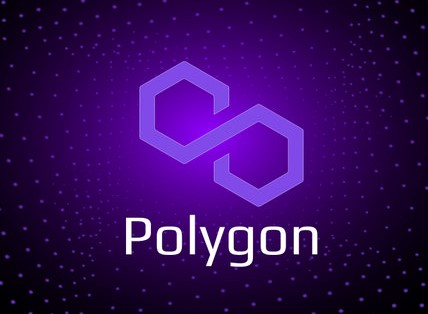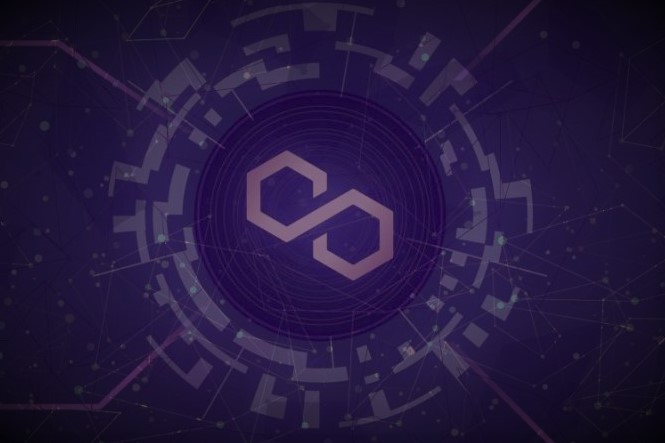
Polygon
24hr
| Low | High |
| $0.7512 | $0.7808 |
Polygon is a cryptocurrency, with the symbol MATIC, and a technology that allows blockchain networks to connect and grow. Polygon – “Ethereum’s internet of blockchains” – launched as Matic Network in 2017. The Polygon platform works using the Ethereum blockchain and integrates Ethereum-based services. Using the Polygon platform can enable the flexibility, scalability, and sovereignty of the blockchain while providing the security, interoperability, and organizational benefits of the Ethereum blockchain. MATIC is an ERC-20 token, which means it is compatible with other Ethereum-based digital currencies. MATIC is used to manage and secure the Polygon network and to pay network transactions.
History of Polygon(MATIC)
The recent emergence of blockchain technology has seen the rise of Polygon. Today, Polygon is an easy-to-use platform on the Ethereum network that enables scalability through Layer 2 solutions and, recently, a multi-layer system that supports the integration of many blockchains in the network. However, before the Polygon network entered the top 15 cryptocurrencies and was called the “internet of blockchains”, it was better known as MATIC.
The MATIC network was launched in October 2017. The Indian cryptocurrency was founded by three people who discovered the scalability problem in Ethereum and wanted to solve the problem.
The original idea came from Jaynti Kanani, the current CEO of Polygon. Kanani worked at Housing.com as a data scientist in 2017. He first discovered the scalability and large scale issues in the Ethereum network due to the popular NFT project at the time, Crypto Kitties . When he talks to Sandeep Nailwal, a blockchain developer he knows from a crypto company, and now business manager Anurag Arjun, with whom he has a relationship due to a relative work circle, the three will have great success in their alliance. . The three partners then started MATIC, basing their operations in Mumbai. MATIC has been able to provide a scaling solution for Ethereum, mainly using sidechains and ensuring resource security using the Plasma framework and decentralized proof-of-ske validators. At that time, the Plasma framework was popular among other projects, but MATIC stood out from the crowd, beating the competition to be one of the best solutions in crypto at that time.
How to create a Polygon Token – MetaMask Network Modification
By accessing the Moralis application node, we can modify our MetaMask network with a URL. One way to change networks is to click on the “Networks” tab on the top right of our MetaMask interface. This will give us a menu of many different ways. You will notice that no polygon’s mainnet or testnet will appear in the menu. Since, we need to add custom RPC by clicking “Custom RPC” again.
We will be prompted to enter a name, RPC URL and Channel ID when tapped. In addition, we can also add a block explorer with tokens, but they are optional. The name we will choose can be different depending on whether we will add mainnet or testnet.

The same goes for the RPC URL, which we obtained in the previous step from the application node. Finally, we need to enter Chain ID. This ID is different for the main and testnets, but for example, the mainnet ID is “137”. However, if we enter the wrong identity, MetaMask will detect it and suggest the correct one. Once we enter the information, we can click “Save” to add the network to our MetaMask.
Once saved, the network will appear in the “Networks” menu, you can go ahead and select this directly as a preparation for later. However, if MetaMask is installed as a browser extension, you only need to click the “Add to MetaMask” button next to the URL in Moralis. This will open MetaMask, all you have to do is follow the instructions.
Value of Polygon (MATIC)
Polygon is a multi-chain and comprehensive system that solves the complexity, poor user experience and problems of traditional Etheruem, unlike Polkadot, Cosmos and Avalanche, Polygon uses security, space and environment Ethereum, Polygon’s service eliminates old relationships. The scaling barrier of many blockchains, because of its compatibility with the Ethereum blockchain, makes it attractive for Ethereum-based smart contract development, and the architecture is based on four layers, which divides the two categories of mandatory cold rules fabric and layer selection, Polygon Networks. The execution layer is part of the mandatory layer.
A layer of ether
layer of protection
Polygon network layer
Massacre
The Polygon network layer is responsible for managing community approvals and production blocks while the layer controls the execution of the Ethereum virtual machine for smart contracts. The option consists of an Ethereum layer and a security layer, the first is a collection of smart contracts and provides services for the end of transactions, staking and communication between the Ethereum mainchain or sidechain, the latter provides security services and support from Polygon network.
Polygon offers the greatest advantage over other blockchains, for example, if the chain is included in the Polygon network that should benefit from the power of arbitrary information that Polygon passes to other blockchains and better access to decentralized applications interoperable on different platforms. Polygon is a type of network that works as a network of interconnected blockchains, with the help of Polygon there is no restriction to keep only one chain network, but the Polygon chain is connected to the wider landscape. Polygon’s goal is to provide blockchain developers with a decentralized network, where everyone can integrate into their own blockchain and overcome the traditional limitations of a single community blockchain. Polygon has its own coin which is MATIC, an ERC-20 token running on the Ethereum blockchain, which works as a transaction and deposit currency, not only the currency of the Polygon chain but also for the side chain in the network, Polygon. a network supported by many technologies, one of which is Plasma Chains, a brilliant solution, extending the limits of the Ethereum network and allowing developers to create systems that cannot be created in Ethereum alone.

